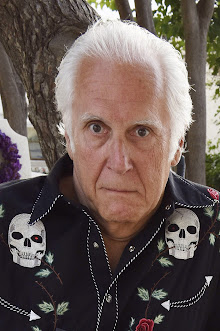In January,
we had the great pleasure to join Ian Wilson, a wonderful friend and one of Australia’s leading bird
photographers, on a road trip from Melbourne to Kangaroo Island off the coast
of Adelaide in South Australia. All the great bird pictures here were taken by Ian and are
shown here with his permission.

Australian darter with prey
The bird spears the fish then tosses it into the air to orient it for swallowing
I recall visiting Kangaroo Island when I was
at university in Adelaide in the sixties when there was an oceanography project
based there. I remember that it was thickly forested with the types of
eucalyptus trees that koala bears like and that it was a stronghold for the
charming animals. I haven’t been back since then and things have changed.
Kangaroo Island has reinvented itself as a tourist destination with honey from Ligurian
bees (the only remaining pure-bred strain), wineries (not very good), oysters (good) and
restaurants (variable). However, it still has dramatic coastline and hosts a
variety of seabirds who pack tidal sand islands as the sea rises and falls.

View from our house - the white on the sandspit is all seabirds - mainly cormorants
Kangaroo
Island is not small. It’s Australia’s third largest island – nearly 100 miles
long - and it’s about ten miles off the mainland coast. The island separated
from the mainland some ten thousand years ago at the end of a glacial period
when the sea level rose. The Kartan people lived there before, but deserted the
area as the sea cut it off.
 |
| As the tide rises, the birds move closer to the shore. And when that floods, they take themselves further down the coast |
 |
| Australian pied cormorant in flight |
 |
| Portrait of Matthew Flinders |
Back to our
trip. We started with a couple of nights at Nelson in Victoria. It’s a pleasant, fishing town on the mouth of the Glenelg River. More important from our point of view
is that it’s the home of a rare and interesting bird, the Rufous bristlebird.
The particular subspecies in southern Victoria is rated as “near threatened”.
The name comes from the bristles at the base of the bill, and can be
seen in Ian’s remarkable pictures. This male was having
a disagreement with an intruder who was after his female. Lots of noise
and display but no injured parties. Also hard to imagine something like that in the
human sphere.

Rufous bristlebird telling off an encroaching male 
Better not underestimate me...
Next stop
was McClaren Vale home to some of South Australia’s best food and wine. We stayed in a cottage overlooking the town.
 |
| Leaving the dock on the car ferry |
 |
| Satellite image showing fire damage |
Avian
victims of the fires included the endangered local subspecies of the Glossy
black cockatoo and the White-bellied whipbird. The latter was our “target bird”,
not least because it had graduated from being a subspecies to the status of full species recently.
Seeing it was hard; photographing it even more so. The much more common
Eastern whipbird has a remarkable call ending in a whiplash that gives the
group its name. The White-bellied has a completely different call and that’s
how we found it. It was a bit of a detective story. First, go “door to door”
asking people and Facebook groups where might be sensible to look. Eventually, this paid off with a tip from a National Park tour guide who suggested a
spot near Vivonne Bay in the south of the island. Next, one visits the scene and tries to trace the
culprit. We patrolled the road and heard the bird call in the thick
bush not too far away. Wandering down a side path rewarded us with more calling
and suddenly the bird flitted past. Then it was gone. The bird had flown.
The next
morning we had an early start – not too early for fear of hitting nocturnal
wallabies on the road – and staked out the same site. The morning went by with
only a few distant calls. We came to the point where it was getting hot and we
were tired. Cappuccino at the nearby café sounded like an option. And then one
of the birds called closeby.
Finally,
the bird was cooperative, even to the extent that Ian got a decent picture. Of
course, he’s not satisfied with it and is already planning another campaign
involving three weeks on Kangaroo Island to get the sort of pictures he’d
really like. But it was an exciting day.

White-bellied whipbird
It was a
memorable trip in so many ways, and we hope to see Ian again in the not too
distant future. In the meanwhile, he shares his magnificent pictures.

















From AA: SPECTACULAR, Michael! Thank you so much for taking us along.
ReplyDeletePleasure, AA. Glad you enjoyed the trip. We certainly did!
DeleteYou ALWAYS have the most fascinating posts!!! I see why you love birding. JS.
ReplyDeleteThanks, Jeff. Birds are endlessly fascinating. Ian has a sequence of pictures showing how a duck lifts itself into the air, half flying and half swimming, when taking off from water. The process is complicated but only takes 3/4 of a second...
Delete